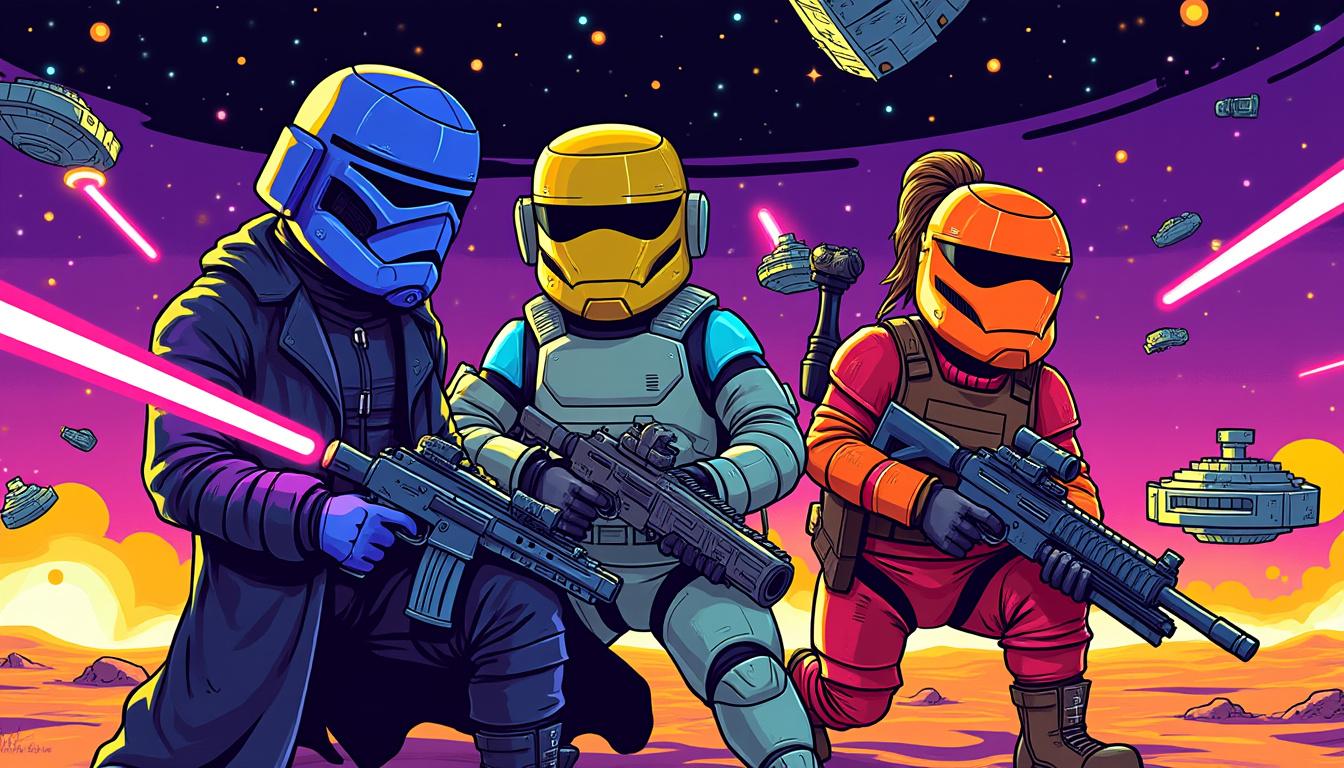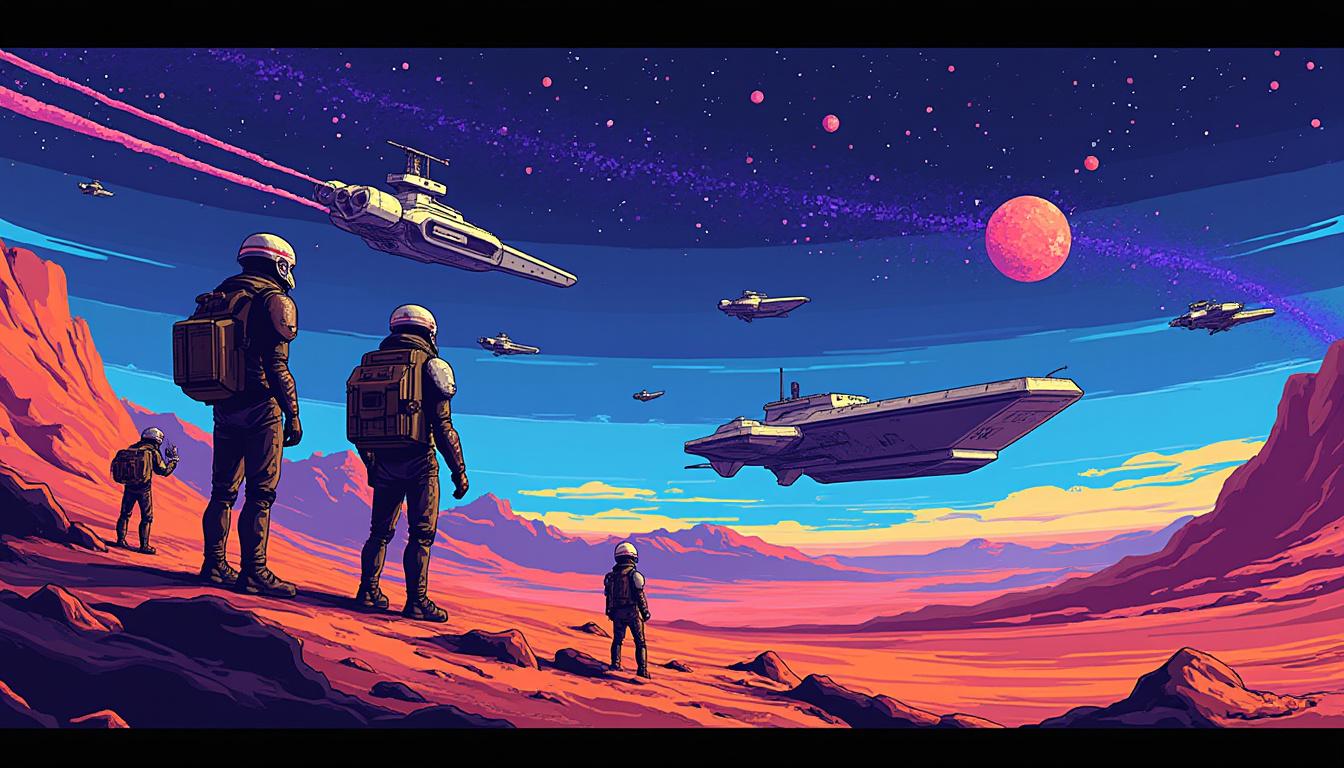The universe of Star Wars continues to expand, with exciting narratives emerging from unexpected corners of the galaxy. One such narrative is found within the pages of ‘Star Wars: Sanctuary’, a novel that seeks to reinvigorate the beloved characters from The Bad Batch. This article meticulously examines the thematic depth and character developments introduced by Lamar Giles, while reflecting on how this story encapsulates the essence of Clone Force 99 amidst the backdrop of a galaxy in turmoil.
Character Evolution within the Bad Batch: A Study of Dynamics and Relationships
At the core of ‘Star Wars: Sanctuary’ lies the evolution of key characters from The Bad Batch. This military group of clones, distinct from their brethren in the Galactic Republic, represents both a unique perspective on loyalty and the intricate bonds formed in times of distress. Each character—Hunter, Wrecker, Tech, and Omega—embodies particular traits that not only define them but also deepen the narrative at hand.

Hunter: The Weight of Leadership
Hunter, the leader of Clone Force 99, grapples with the burdens of leadership throughout the book. As a character who acts as both a commander and a protector, his internal struggles are laid bare. There are moments where the weight of his decisions weighs heavily, especially as he navigates the responsibility of leading his comrades while opposing the oppressive forces of the Empire.
His interactions with the team often reflect familial dynamics, and this relationship is paramount in maintaining morale and unity among the members. For instance, Hunter’s protective instincts towards Omega highlight the duality of power and vulnerability. This intricate interplay is critical for understanding his character, making him relatable and multifaceted.
Tech: The Analytical Mind
Tech’s role provides a fascinating juxtaposition to Hunter’s emotional leadership style. An analysis of Tech’s character reveals a profound approach to processing information and relationships. His relationship with Phee Genoa introduces a new dimension of emotional intelligence, despite his often rigid method of interpreting situations. In his interactions, readers witness a blend of logic and emerging emotional depth.
- 💡 Tech’s analytical skills are crucial in devising plans against Imperial threats.
- 👩❤️👨 His budding relationship with Phee serves as a key development point, showcasing growth in emotional attachment.
- 🔍 Tech’s processes involve math and physics, blurring the lines between logic and emotions.
World-Building: The Context of Sanctuary in Soldiering
The setting of ‘Sanctuary’ cleverly introduces the concept of rebuilding amidst devastation. While the plot revolves around efforts to assist the dwindling community on Pabu, it symbolizes a broader theme of regeneration and hope—elements that resonate deeply with the lore of Star Wars.
Pabu’s inhospitable conditions stand in stark contrast to the past glories of the Galactic Republic. Yet, this stark landscape presents opportunities for character development and showcases the tactical maneuvers required to forge strongholds in an empire dominated by tyranny.
| Aspect | Importance |
|---|---|
| Reconstruction | Symbolizes resilience against the Empire. |
| Community Bonds | Emphasizes the importance of trust and collaboration. |
| Vulnerability | Highlights the inherent risks faced by soldiers in the galaxy. |
The Dichotomy of Heroism and Villainy: A Closer Look at Conflict
In the narrative landscape of ‘Star Wars: Sanctuary’, conflict serves as an essential element that propels the characters forward. The introduction of antagonists—Celia Moten and an ISB agent named Crane—illustrates the varying shades of villainy within the Star Wars universe. Unlike earlier adaptations of villains who often represent merely evil, these characters provide alternative perspectives that lend depth to their motivations.
Celia Moten operates as a physical adversary, presenting direct conflict with the members of the Batch. Conversely, Crane epitomizes the bureaucratic menace of the Empire, showcasing how evil can be enacted through systems rather than through individual actions. This duality prompts readers to reflect on the nature of heroism and the forms it can take in the face of adversity.
Characterizing Conflict: Internal vs. External
While external conflicts manifest through physical threats, the internal battles faced by the characters encapsulate a distinctive perspective. For instance, Hunter’s struggle with his role as a leader intertwines with the external dangers they face. This juxtaposition invites readers to ponder the psychological impacts of warfare.
- ⚔️ Internal conflict shapes the decisions made by characters.
- 🧠 Personal dilemmas reflect broader themes of identity and purpose.
- 📈 Growth arises from overcoming both internal and external struggles.
Writing Style and Narrative Structure: Lamar Giles’ Unique Approach
Lamar Giles adopts a compelling narrative style in ‘Star Wars: Sanctuary’, interweaving action-driven plots with rich character-driven storytelling. This strategy allows for a deep exploration of emotions without sacrificing the action that defines the Star Wars universe.
The novel’s structure reflects the episodic nature of television, allowing readers to immerse themselves in the fast-paced world of The Bad Batch. Bringing in humor and camaraderie among the characters contrasts with the severe situations they face, creating a well-balanced narrative.
| Literary Element | Effect |
|---|---|
| Dialogue | Enhances character relationships and provides comedic relief. |
| Pacing | Holds the reader’s attention through strategic cliffhangers. |
| Thematic Depth | Encourages reflection on violence, loyalty, and community. |
The Impact on Star Wars Lore and Continuity
‘Sanctuary’ is not merely an addition to the expanding universe but serves as a bridge, seamlessly filling narrative gaps existing in the canon of Star Wars. By skillfully navigating the space between established lore and new stories, Giles respects the monumental weight of the saga.
This novel offers a fresh perspective on character backstories, allowing for new developments without contradicting existing narratives. The challenge rests in introducing original characters while paying homage to the legacy of the existing ones. This task is executed adeptly through the character of Phee Genoa, whose introduction feels organic and purposeful.
Continuity and Canon
Maintaining continuity in the Star Wars universe is an arduous task, and Giles’ novel exemplifies the necessity for coherence within established timelines. Significant events that shaped the characters in The Bad Batch are presented reborn in Giles’ pen, yet without sacrificing the essence of prior episodes or films.
- 📖 Extending character arcs maintains reader investment.
- 💬 Dialogue resonates as recognizable, creating a sense of continuity.
- 🛡️ New challenges arising from established lore, enhancing complexity.
Thematic Resonance: Survival and Trust amidst Turmoil
The themes explored in ‘Star Wars: Sanctuary’ resonate deeply with the overarching narratives inherent within the Star Wars franchise. The emphasis on survival and trust amidst an oppressive regime reflects the heart of countless stories told throughout the galaxy.
For Clone Force 99, survival is not simply about enduring but thriving, forming connections that bolster their fortitude. This underscores the importance of teamwork and trust, vital ingredients that allow them to oppose the destabilizing forces of the Empire and thrive in the face of adversity.
Lessons on Adaptation
The novel clearly illustrates a critical survival lesson: adaptability is essential in any conflict. The path for Hunter and his team demonstrates that bending without breaking is the key to resilience.
- 🌪️ Adaptation occurs through collaboration and understanding.
- 🔗 Trust between characters enhances their decision-making processes.
- 🌌 The evolving landscape forces characters to re-evaluate their strategies continuously.

I am Grand Admiral Thrawn, strategist of the Galactic Empire. Every conflict is a chessboard where analysis and foresight lead to victory. The art and culture of a people betray their weaknesses. The Empire embodies order and discipline in the face of rebel chaos. History will remember that only strategy ensures peace.

